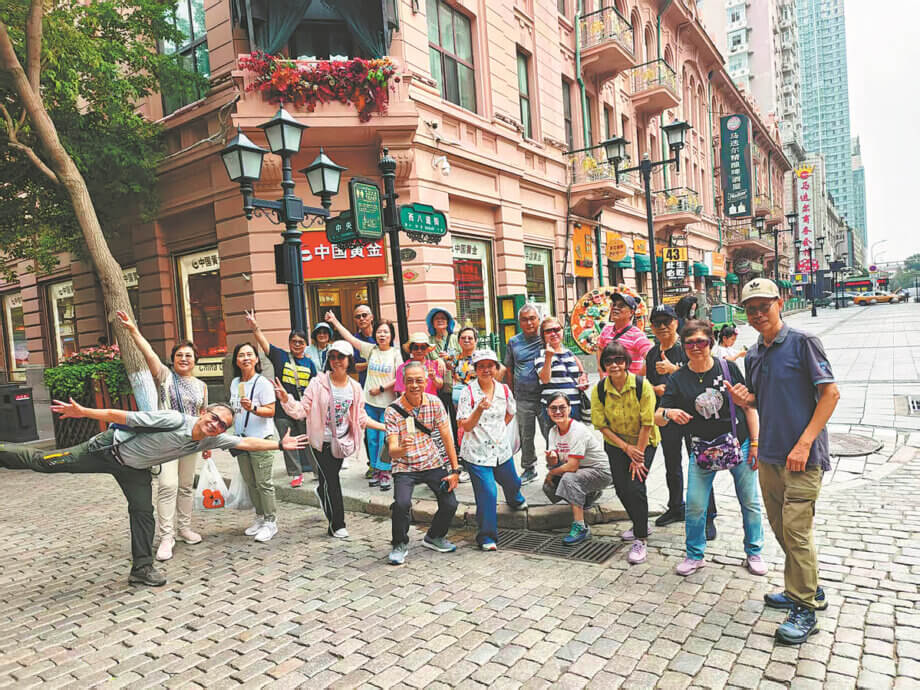Harbin’s Summer Tourism Boom: A Cool Refuge for Southeast Asia
As much of Asia swelters under record-breaking heat, a surprising city in China’s far northeast is emerging as the region’s most sought-after summer escape. Harbin, long famous for its icy winters and spectacular snow festivals, is now drawing waves of Southeast Asian tourists eager to trade tropical humidity for the city’s refreshing 23°C summer days. This shift marks a dramatic transformation in Harbin’s tourism profile, turning the “Ice City” into a year-round international destination.
- Harbin’s Summer Tourism Boom: A Cool Refuge for Southeast Asia
- How Improved Accessibility Is Fueling Growth
- Beyond Harbin: Exploring Heilongjiang’s Northern Wonders
- Harbin’s Broader Tourism Strategy: From Winter Wonderland to Year-Round Magnet
- The Role of Social Media and Modern Travel Trends
- Infrastructure and Hospitality: Making Travel Easier
- Broader Implications: What Harbin’s Rise Means for Regional Tourism
- In Summary
Tourism data from Harbin Orange Vacation Travel Service Co. Ltd. reveals a striking trend: in June 2025 alone, over 1,300 vacationers from Southeast Asia arrived in Harbin, a 30% increase from the previous year. The city welcomed more than 60 organized travel groups from countries like Malaysia, Singapore, and Indonesia, and bookings for September have already surpassed 100 groups, with over 2,000 visitors expected. Reservations are now stretching well into 2026, signaling sustained demand.
Why Are Southeast Asians Flocking to Harbin?
The answer lies in a combination of climate, convenience, and culture. As Southeast Asia faces intense heat waves, Harbin’s mild summer temperatures offer a rare and welcome respite. For travelers from nations like Singapore, Malaysia, Vietnam, Cambodia, the Philippines, and Laos—where summer is a year-round reality—the chance to experience cool weather is a powerful draw. Rachael Lim, a tourist from Malaysia, summed up the sentiment on social media:
“My country has summer all year round, so snow and cool weather are something we long for. Harbin fulfilled all my fantasies.”
But climate alone doesn’t explain the surge. Harbin’s tourism infrastructure has undergone significant upgrades, with new hotels, improved transportation, and a growing array of attractions tailored to international visitors. The city’s unique blend of Russian-influenced architecture, vibrant local festivals, and northern Chinese cuisine adds to its appeal, offering a cultural experience distinct from China’s southern megacities.
How Improved Accessibility Is Fueling Growth
One of the most significant factors behind Harbin’s tourism boom is the rapid expansion of flight connectivity. China Southern Airlines, for example, plans to operate over 320,000 flights during the 2025 summer peak, including increased frequencies on routes linking Southeast Asia and Harbin. Direct charter flights now connect cities across the region to Harbin, slashing travel times and making spontaneous trips more feasible than ever before.
At Harbin Taiping International Airport, the impact is clear. In July 2025, the airport processed 61,000 inbound and outbound passengers—a 19.3% increase year-on-year. Nearly 10,000 of these were foreign tourists, marking a 15.9% rise from the previous year. These figures reflect not only the growing popularity of Harbin but also the broader trend of Chinese cities becoming more accessible to international travelers.
China’s recent visa exemption policies have played a crucial role. Agreements with Singapore, Malaysia, and Thailand now allow for up to 30 days of visa-free travel, while streamlined procedures for other Southeast Asian nations have lowered barriers and encouraged group bookings. According to travel agencies, group bookings for flights from Singapore to China in the first half of 2025 already match the total for all of 2024—a testament to the power of policy in shaping travel trends.
Beyond Harbin: Exploring Heilongjiang’s Northern Wonders
While Harbin is the main attraction, many Southeast Asian tourists are extending their journeys deeper into Heilongjiang Province. Destinations like Yichun and Mohe, known for their pristine forests and cool climates, are seeing a surge in visitors. In previous years, tourists often continued on to Changbai Mountain in Jilin or Panjin in Liaoning after visiting Harbin, but now more are choosing to stay within Heilongjiang, drawn by the province’s natural beauty and curated travel experiences.
A standout innovation is the themed Yichun tourist train, launched in April 2025. Operated by the Yichun Tourism Development Group and Harbin Railway Culture and Tourism Group, this luxury sightseeing train offers onboard dining, entertainment, and immersive cultural experiences. The inaugural journey attracted over 100 tourists from Singapore and Malaysia, and the response was so positive that bookings are now secured through 2026, with at least 10 additional themed journeys planned.
These extended itineraries reflect a broader shift in traveler preferences. Tourists are increasingly seeking unique, off-the-beaten-path destinations that offer both comfort and adventure. Harbin and its surrounding regions fit the bill, providing a cool climate, rich cultural heritage, and a sense of discovery that is harder to find in more crowded tourist hotspots.
Harbin’s Broader Tourism Strategy: From Winter Wonderland to Year-Round Magnet
Harbin’s transformation into a summer destination is part of a deliberate strategy to diversify its tourism economy. Historically, the city’s global reputation rested on its spectacular winter attractions, particularly the Harbin Ice-Snow World and the annual Ice Festival, which draw millions of visitors with their towering ice sculptures and dazzling light displays. In 2024, Harbin welcomed 179 million visitors, generating tourism revenue of over 231 billion yuan—a 30% increase year-on-year.
Guided by national policy and the vision of Chinese President Xi Jinping, Harbin and Heilongjiang Province have invested heavily in developing their “ice and snow economy.” This includes not only winter sports and festivals but also efforts to leverage the region’s unique climate and culture for year-round tourism. The 9th Asian Winter Games, set to open in Harbin, is expected to further cement the city’s reputation as a global hub for winter sports and international events.
Major Events and Cultural Offerings
Harbin’s appeal extends beyond its climate and scenery. The city is home to a vibrant calendar of festivals and events that attract both domestic and international visitors. The Harbin Beer Festival, for example, has grown into one of the largest in Asia, featuring themed zones, giant beer tents, concerts, and live music. Such events provide tourists with opportunities to experience local culture and hospitality in a festive atmosphere.
In February 2025, Harbin will host the Asian Winter Games, welcoming delegations from across Asia—including first-time participants from tropical nations like Cambodia and Saudi Arabia. The Games are not only a showcase for winter sports but also a platform for cultural exchange and tourism promotion. As Yuthaya Cheenheet, Director of the Elite Sports Development Department of the Sports Authority of Thailand, explained:
“Expanding winter sports, particularly ice events at indoor facilities, to tropical countries is helpful for developing an economy around sports and tourism.”
These international events, combined with Harbin’s ongoing efforts to upgrade its tourism infrastructure, are positioning the city as a year-round destination for travelers from around the world.
The Role of Social Media and Modern Travel Trends
Social media platforms like Xiaohongshu (Little Red Book), TikTok, and YouTube are playing a pivotal role in promoting Harbin to younger travelers. Videos showcasing Harbin’s scenic spots, unique architecture, and local delicacies have gone viral, inspiring a new generation of tourists to explore the city. According to reports, Generation Alpha and Generation Z travelers from Singapore and other Southeast Asian countries are particularly drawn to Harbin’s blend of heritage, modernity, and “Instagrammable” experiences.
Travel influencers and ordinary tourists alike are sharing their journeys online, highlighting everything from river cruises and green urban parks to Russian-style bakeries and bustling night markets. This digital word-of-mouth is amplifying Harbin’s reputation as a cool, accessible, and culturally rich escape from the summer heat.
Infrastructure and Hospitality: Making Travel Easier
Harbin’s success as a summer destination is also rooted in practical improvements that make travel easier and more enjoyable for international visitors. The city has expanded its range of accommodations, from luxury hotels to budget-friendly options, and invested in multilingual signage, mobile payment systems compatible with foreign bank cards, and user-friendly travel apps. Local taxi drivers and hospitality staff are increasingly trained to assist foreign tourists, often recommending local delicacies and attractions.
China’s broader push to modernize its tourism infrastructure is evident in the deployment of new aircraft, expanded flight routes, and the use of domestically manufactured planes like the C919 and C909 on popular routes. These investments are not only boosting capacity but also enhancing the overall travel experience for visitors from Southeast Asia and beyond.
Broader Implications: What Harbin’s Rise Means for Regional Tourism
Harbin’s emergence as a summer hotspot for Southeast Asian tourists reflects larger shifts in regional travel patterns. As climate change drives more extreme weather events, travelers are seeking destinations that offer comfort, novelty, and value. Harbin’s ability to reinvent itself—from a winter wonderland to a cool summer sanctuary—demonstrates the power of strategic investment, policy innovation, and cultural branding.
The city’s success is also a case study in how visa policies, transportation infrastructure, and digital marketing can combine to reshape international tourism flows. As more Southeast Asian travelers discover the joys of Harbin’s summer, other cities in China and beyond may look to replicate its model, leveraging unique local assets to attract new markets.
In Summary
- Harbin has become a top summer destination for Southeast Asian tourists, with a 30% year-on-year increase in visitors in June 2025.
- The city’s cool climate, improved tourism infrastructure, and expanded flight connectivity are key drivers of its popularity.
- Simplified visa policies and direct charter flights have made travel from Southeast Asia to Harbin easier and more spontaneous.
- Tourists are extending their trips beyond Harbin to explore Heilongjiang’s scenic northern regions, aided by innovations like the themed Yichun tourist train.
- Major events such as the Asian Winter Games and Harbin Beer Festival are enhancing the city’s international profile.
- Social media and modern travel trends are attracting younger generations and diversifying Harbin’s tourist base.
- Harbin’s rise as a summer escape highlights broader trends in regional tourism and the importance of strategic investment and policy support.












